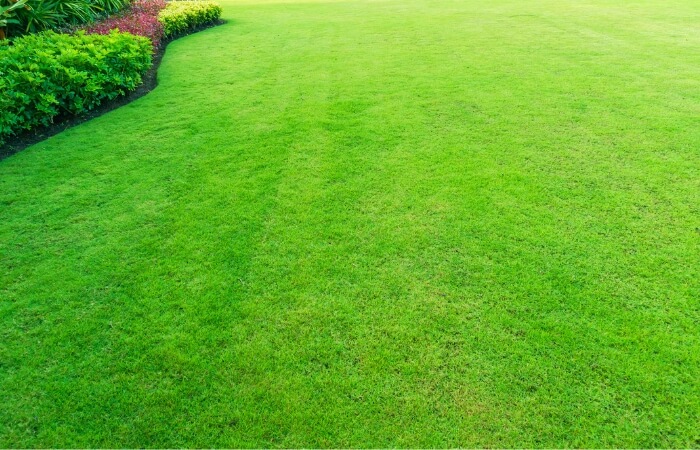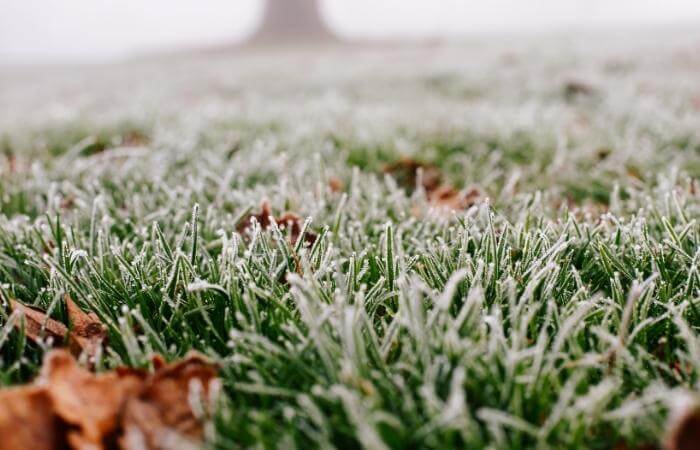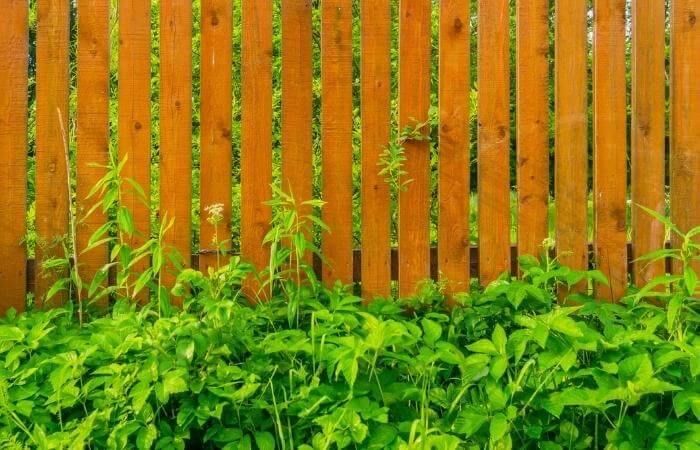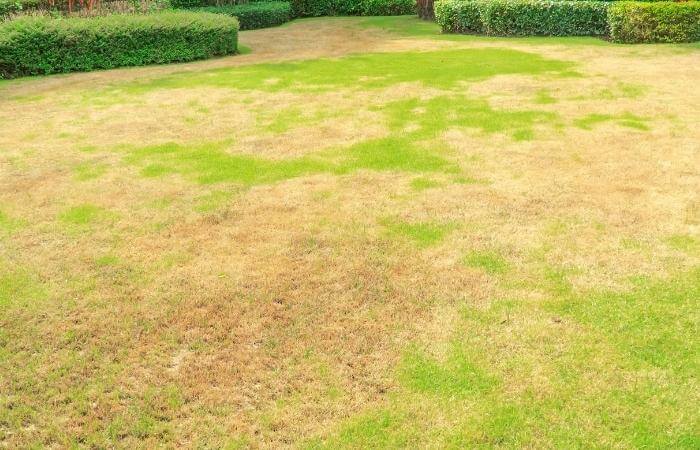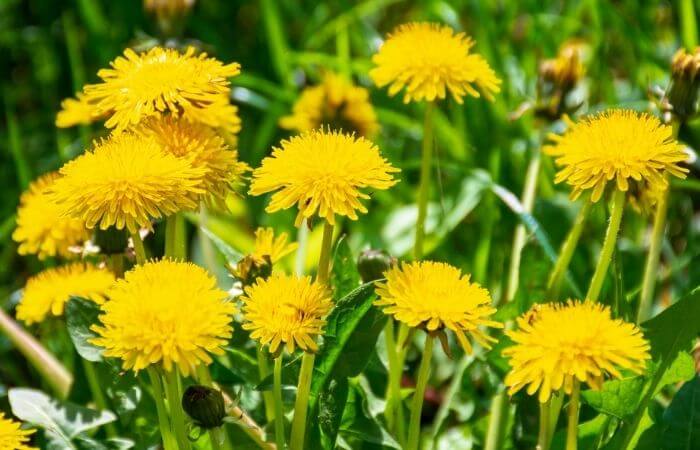Is a dull, patchy lawn ruining the curb appeal of your home?
Many homeowners wish they had a lush, green lawn but aren’t sure of the best way to make grass green fast and have it last.
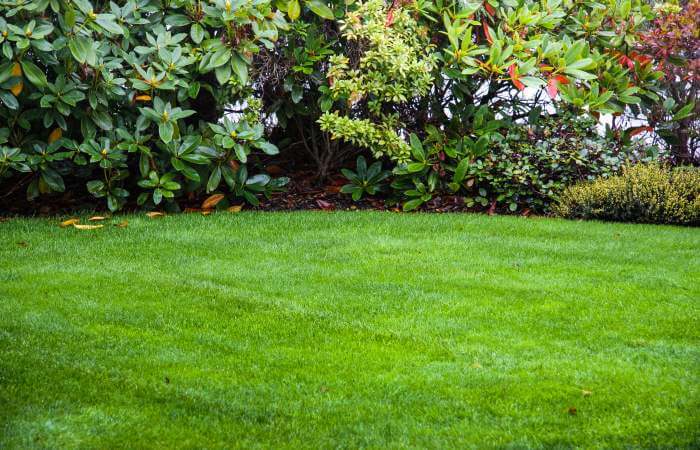
No worries! Inside this guide, you can learn what makes the grass green and follow the steps to quickly green up your lawn with proper mowing, fertilizer, and watering.
Stop being embarrassed by your lawn and use the methods below to make it the envy of your neighbors!
What Makes Grass Green
The green color of grass comes from chlorophyll. Chlorophyll is a pigment found in grass which use sunlight to transform water and carbon dioxide into nutrients the grass needs to survive.
The transformation process is called photosynthesis, and you know your lawn is performing this vital task properly when your grass is a deep shade of green.
In healthy grass, the chlorophyll pigment naturally absorbs wavelengths in both blue light and red but reflects light in green. This reflection is what makes grass appear green.
In lawns in poor condition, especially those lacking iron in the soil, chlorophyll production slows down, which causes yellowing, or completely ceases, and your grass dies.
Variety Of Green Shades
Not all grass varieties reflect the same shade of green. Some are much more bright and vibrant or rich and deep in tone than others.
For a lawn with gorgeous green color, consider planting or overseeding with these grass varieties:
- Kentucky bluegrass
- Perennial ryegrass
- Bermudagrass
- Tall fescue
- St. Augustine grass
Other grass varieties may be hearty for your region, but naturally reflect a lighter or more yellow-tone of green which can detract from the beauty of your yard and home.
How To Green Up Grass
The best way to make grass green fast is to follow each of the steps below that encourages the long-lasting health and vibrancy of your grass.
Step 1: Fertilize and Control Pests
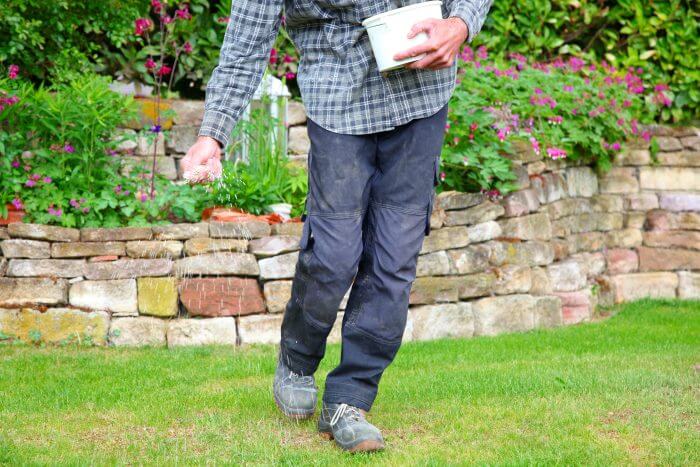
What you need:
- All purpose high-nitrogen fertilizer
- Iron lawn supplement
- Broadleaf herbicide
- Sprinkler or hose
For green grass fast, fertilizer and iron supplements are the way to go. Be aware that overdoing fertilizer can also kill your grass, so take care to provide only the amount your lawn needs to rejuvenate its color and health.
Related | Compost vs Fertilizer
Apply a high-nitrogen, all-purpose fertilizer in early spring as grass shows signs of new growth. The fertilizer should include phosphorus for robust root development, and potassium for strong cells within the grass-blade walls.
Some lawns can use a treatment again in the early fall to keep nutrient levels high. After applying fertilizer, give your yard a good soak to jump-start the roots absorption of the nutrients.
Using a broadleaf herbicide in spring is another way to combat nutrient-sucking weeds and crabgrass from taking hold in your lawn and fading color.
Iron Supplement Application
Lawn iron supplements are a secret weapon pro landscapers use to bring a deep blue-green tone to golf-courses, businesses, and homes. Without a good supply of iron, grass cannot maintain their chlorophyll levels, and color will fade or brown.
Apply iron supplements in the spring before daytime temperatures hit 70 degrees Fahrenheit and water in well.
Reapplication can be done up to four times a year with most products, but watching how your grass color responds is a better indication of when to reapply.
Step 2: Overseed

What you need:
- High-quality grass seed
- Sprinkler
- Broadcast spreader
- Topsoil
Boosting the thickness of your lawn by overseeding can stop weeds from spreading as well as keep the soil more shaded, which improves color.
Spread seed using a broadcast spreader across your whole lawn. For very bare or thin spots, use topsoil along with the seed to increase germination and help those areas fill in faster.
Related | Can You Just Sprinkle Grass Seeds?
The more grass blades in your lawn, the greener your grass will appear. So keep the newly overseeded yard moist by using a sprinkler two times a day so seeds can take root.
If you live in southern regions, a great way to keep your grass green all year is to overseed a warm-season lawn, like St. Augustine, with a cool-season grass such as Perennial ryegrass. When the warm-season grass goes dormant, the cool-season grass will remain green.
Related | How Long After Planting Grass Seed Can You Walk On It?
Step 3: Mow Correctly
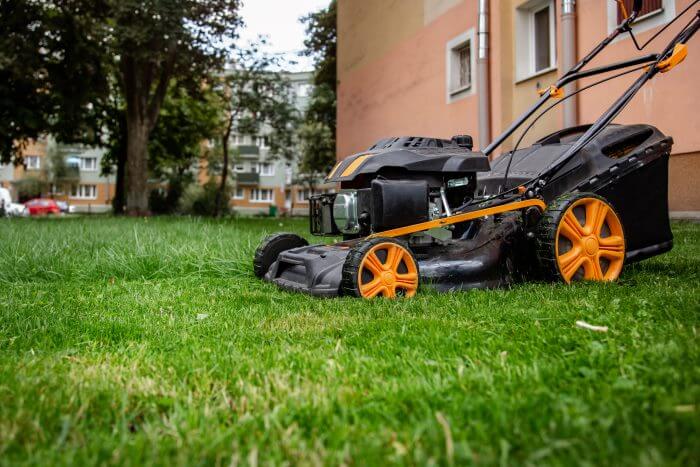
What you need:
- Sharp mower blades
- Raise the deck
- Mulching mower
When mower blades get dull, they can’t slice off the top of grass cleanly. Instead, the mower shreds the grass, leaving rough edges that dry out and turn brown. Over a whole lawn, these brown edges add up and make your yard appear less green.
Once a year, sharpen your mower blades. Raise the mower deck, so the grass grows longer, which helps the lawn look greener by hiding thin spots.
Related | How Deep Do Grass Roots Grow?
Remember to only cut off one-third the height of the grass in any one session. Scalping your grass by taking off more will cause shock and turn the lawn yellow or brown.
Lastly, quit bagging grass clippings. Invest in a good mulching mower and leave the clippings on the lawn to decompose and return beneficial nutrients to the soil.
Step 4: Aerate and Dethatch

What you need:
- Aeration tool
- Dethatching rake or machine
Constant action over your lawn can cause compaction, which harms the grass. Dense soil prevents the proper spread of the root system and reduces air, water, and nutrient flow, which stresses the grass.
Thatch that builds too thick can also choke out grass, making it turn brown or dull.
The best prevention of these two issues is to aerate and dethatch your lawn in either spring, fall, or both.
Keeping soil loose and open to air and water penetration will keep the grass healthy and green.
Use a dethatching rake or tool to remove thatch thicker than one-half inch. Removing all the brown and dead debris will also immediately make your lawn look greener.
Related | Best Lawn Dethatchers
Aeration tools either jab spikes into the ground to open up channels or pull out plugs of soil and grass and toss them onto the grass. Plug-style aeration tools can leave your lawn looking frightful, but once the plugs decompose the grass will soon look greener.
Run your aerator over the lawn in several directions to ensure proper penetration.
Step 5: Water
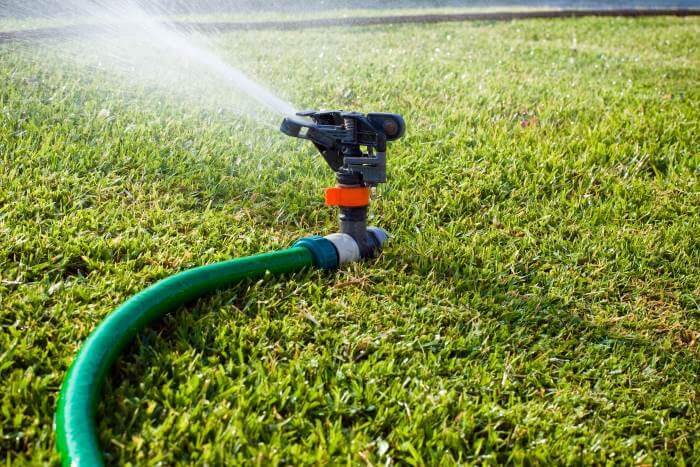
What you need:
- Sprinkler or hose
If you want green grass, your lawn needs 1.5 inches of water per week. In hot, dry summers, you may need to increase the amount, while in rainy seasons, you can let nature handle this chore.
The key to proper watering is to soak your lawn deeply but less often. Giving grass enough water to seep four to six inches into the soil encourages roots to grow deep, which equals greener grass.
Use a sprinkler once or twice weekly to water your grass faster and with more consistent coverage. Shoot for 30 minutes or so per section to ensure the water is soaking in deep.
In Summary
You don’t need to transform into a professional groundskeeper to know how to make grass green fast, but you do need to follow basic lawncare guidelines.
With a little bit of time, smart planning, and effort, you can reap big rewards by having the thickest, greenest lawn around!
